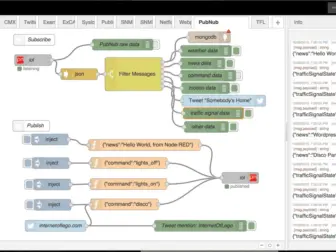Tag - IoT for beginners
Introduction to IoT for Beginners
IoT, or Internet of Things, is a concept that involves connecting everyday objects to the internet, allowing them to send and receive data. It has become increasingly popular in recent years, with various industries adopting IoT technology to improve efficiency and productivity. For beginners looking to understand IoT, it is important to grasp the basic concepts and potential applications of this technology.
At its core, IoT is about connecting devices and sensors to the internet to collect and exchange data. This data can then be used to monitor and control the objects in real-time, leading to smarter decision-making and automation. For example, a smart thermostat connected to the internet can adjust the temperature based on the user’s preferences and weather conditions, optimizing energy usage.
IoT has a wide range of applications across different industries, including smart homes, healthcare, agriculture, transportation, and manufacturing. In a smart home, IoT devices such as smart bulbs, security cameras, and voice assistants can be controlled remotely through a smartphone, enhancing convenience and security. In healthcare, IoT sensors can monitor patients’ vital signs and alert healthcare providers in case of emergencies, improving patient care.
For beginners looking to get started with IoT, it is important to understand the key components of an IoT system. These include sensors to collect data, communication protocols to send data to the cloud, cloud platforms to store and analyze data, and actuators to control devices based on the data. By understanding how these components work together, beginners can design and implement their own IoT solutions.
There are also various IoT development platforms and tools available for beginners to experiment with. Platforms such as Arduino and Raspberry Pi provide easy-to-use hardware for building IoT prototypes, while cloud services like AWS IoT and Google Cloud IoT offer scalable solutions for deploying IoT applications. By leveraging these tools, beginners can gain hands-on experience with IoT technology and develop their skills.
As IoT continues to evolve and expand, the possibilities for innovation are endless. From connected cars and smart cities to industrial automation and precision agriculture, IoT has the potential to revolutionize the way we live and work. For beginners interested in exploring the world of IoT, there are plenty of resources available to help them get started and unleash their creativity.
